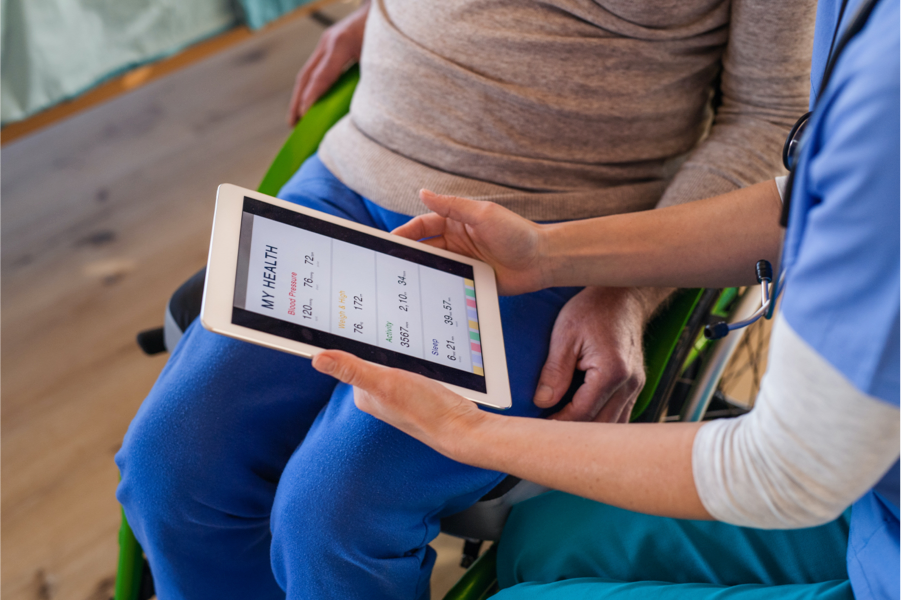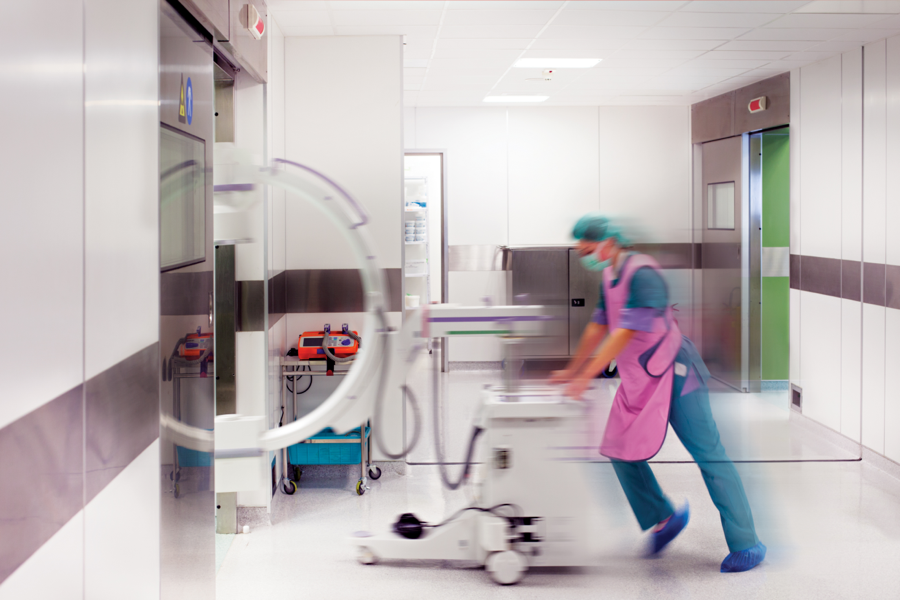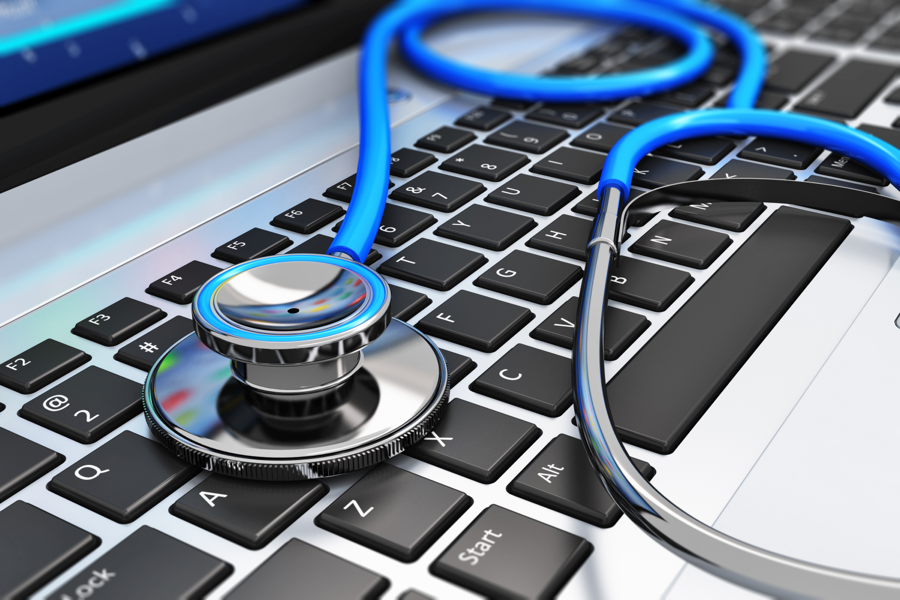
PROFESSIONAL DEVELOPMENT
Working with New Technology as a Traveling Nurse
-
 EveryNurse Staff
EveryNurse Staff
- Last Updated: 05/11/2023

As a traveling nurse, your job involves providing top-quality care to patients in various healthcare facilities across different locations. To achieve this, you must stay updated with the latest technologies and tools used in the medical field. These technologies not only make your work more efficient and productive, but also enhance patient care outcomes. This article explores the importance of staying updated with technology in nursing, common technologies used by traveling nurses, challenges in adopting new technology, and tips for successfully integrating new technology into your practice.
The Importance of Staying Updated with Technology in Nursing
As a healthcare professional, your goal is to deliver high-quality healthcare services to your patients. Technology plays a critical role in achieving this goal. It provides you with access to up-to-date patient data, enhances communication and collaboration among healthcare professionals, and helps you comply with industry standards and regulations.
Furthermore, technology can help you to reduce the risk of medication errors, enhance clinical decision-making, and streamline educational resources. As a traveling nurse, having access to reliable technology can help you adjust quickly to new locations and patient populations.
Enhancing Patient Care
Technology has revolutionized the nursing profession by providing new avenues for patient treatment and care. With the advent of electronic health records (EHRs), patient data can be easily accessed and shared among healthcare professionals. This helps to ensure that patients receive appropriate and timely care, regardless of location. Additionally, wearable technology, such as continuous glucose monitors and oxygen saturation monitors, provide healthcare providers with immediate access to real-time patient data.
Streamlining Communication and Collaboration
Effective communication and collaboration among healthcare professionals is essential to ensuring quality patient care. Technology provides innovative solutions to help achieve this. Telemedicine platforms offer patients virtual consultations and can reduce the need for in-person visits. Furthermore, online collaboration tools and secure messaging apps allow you to communicate with colleagues, exchange critical patient information, and coordinate care delivery more efficiently.
Meeting Industry Standards and Regulations
The healthcare industry is continuously updating and improving quality standards. As a travel nurse, you need to comply with the various standards and regulations in each new healthcare facility you work at. Technology can aid in meeting these standards by providing essential tools to ensure patient safety, accurately document patient data, and improve patient outcomes.
For example, electronic medication administration records (eMARs) have significantly reduced medication errors by providing real-time access to patient medication information. This has improved patient safety and has also reduced the risk of legal issues for healthcare professionals.
Common Technologies Used by Traveling Nurses
Electronic Health Records (EHRs)
EHRs are an essential technology used by traveling nurses. They allow you to quickly access patient health records, history, and treatment plans. EHRs also enhance patient safety, reduce the risk of errors, and improve the quality of care delivered to patients.
Electronic health records have revolutionized the healthcare industry. They provide a comprehensive view of a patient’s health history, including previous diagnoses, medications, and lab results. This information is crucial for nurses, as it helps them make informed decisions about patient care. EHRs also make it easier to communicate with other healthcare providers, ensuring that everyone is on the same page when it comes to patient treatment.
One of the key benefits of EHRs is their ability to reduce the risk of errors. With electronic records, nurses can easily track medication orders, dosages, and administration times, reducing the risk of medication errors. EHRs also improve patient safety by providing alerts for potential drug interactions and allergies.
Telemedicine Platforms
Telemedicine refers to the remote delivery of healthcare services. Telemedicine platforms allow you to communicate with patients and other healthcare providers located in different locations. Through this technology, you can diagnose patients, develop treatment plans, provide follow-up care and monitoring, and provide patients with necessary educational resources.
Telemedicine has become increasingly popular in recent years, especially in rural areas where access to healthcare can be limited. With telemedicine, nurses can provide care to patients who may not otherwise have access to it. Telemedicine also allows nurses to communicate with other healthcare providers, ensuring that patients receive coordinated care.
Mobile Health Apps and Devices
Mobile health apps and devices are increasingly common in nursing. They provide mobile access to patient data, enhance clinical decision-making, provide medication reminders, and help you manage your time more efficiently. Mobile health apps and devices also allow you to monitor patients remotely, reducing the need for in-person visits, improving patient outcomes, and reducing the risk of readmission.
Wearable Technology for Patient Monitoring
Wearable technology, such as heart rate monitors, glucose monitors, and blood pressure cuffs, are becoming increasingly popular among healthcare providers. They provide real-time data and allow you to monitor patients from remote locations. Wearable technology also helps in detecting and identifying patient conditions early, making it easier to develop treatment plans and improve patient outcomes.
Wearable technology has the potential to transform the way nurses provide care. With these devices, nurses can monitor patients in real-time, providing immediate feedback and intervention when necessary. Wearable technology also allows for continuous monitoring, providing a more comprehensive view of a patient’s health status.
Challenges Faced by Traveling Nurses in Adopting New Technology
As a traveling nurse, you are constantly on the move, working at different healthcare facilities and interacting with patients from diverse backgrounds. With the healthcare industry’s rapid technological advancements, it is essential to stay updated with the latest tools and systems to provide the best care possible. However, adopting new technology can present its own set of challenges.
Limited Training Opportunities
One of the most significant challenges faced by traveling nurses is the limited availability of training opportunities for new technologies. Many healthcare facilities may not have the resources to provide comprehensive training to their staff, leaving nurses to figure out new systems on their own. This can be particularly challenging for traveling nurses who may not have a consistent base of operations.
However, there are ways to overcome this challenge. Partnering with local healthcare facilities and learning institutions can provide access to training and educational resources. Additionally, online courses and webinars can be a great way to stay updated with the latest developments in healthcare technology.
Inconsistent Technology Across Healthcare Facilities
Another challenge faced by traveling nurses is the inconsistency of technology across different healthcare facilities. Each facility may use different systems and tools, making it difficult for nurses to adapt quickly. This can slow down work and significantly impact patient care.
One way to overcome this challenge is to stay informed and prepared to adapt to new systems quickly. Before starting work at a new facility, take the time to research the technology used and familiarize yourself with its features and functions. Additionally, networking with other nurses and healthcare professionals can provide valuable insights into how different facilities operate.
Balancing Patient Care with Technology Use
While technology can enhance patient outcomes, it can also be overwhelming. As a nurse, it is essential to balance your use of technology with hands-on patient care. Excessive reliance on technology may lead to a lack of interpersonal interaction or failures in noticing important patient observations.
One way to strike a balance is to prioritize patient care and use technology as a tool to support your work. Take the time to interact with patients and listen to their concerns and needs. Use technology to streamline processes and improve efficiency, but always keep patient care at the forefront of your work.
Tips for Successfully Integrating New Technology into Your Practice
Continuously Seek Out Educational Resources
As a traveling nurse, it is your responsibility to keep up with new technology and learn how to integrate it into your practice. Continuously seeking out educational resources such as conferences, online courses, and professional organizations can help you stay abreast of new technologies and prepare you for their adoption.
Network with Other Traveling Nurses
By networking with other traveling nurses, you can gain useful insights and support in the adoption of new technology. Reach out to nursing associations and professional organizations to meet other traveling nurses who are working with the same technology. Share experiences and best practices to improve the integration of new technologies in nursing.
Practice Time Management and Prioritization
Adopting new technology may require additional time and effort on your part. It is essential to manage your time efficiently and prioritize tasks to ensure that patient care is your priority.
Embrace Change and Adaptability
Conclusion
There is no doubt that technology is transforming the nursing profession. As a traveling nurse, you play a critical role in delivering high-quality care to patients across diverse locations. Staying updated with the latest technologies, adopting new systems, and keeping patients at the forefront of your decision-making processes will help you provide the best quality of care. By continuously learning and improving your technological skills, you will be set up to make a positive impact in your nursing practice.



















